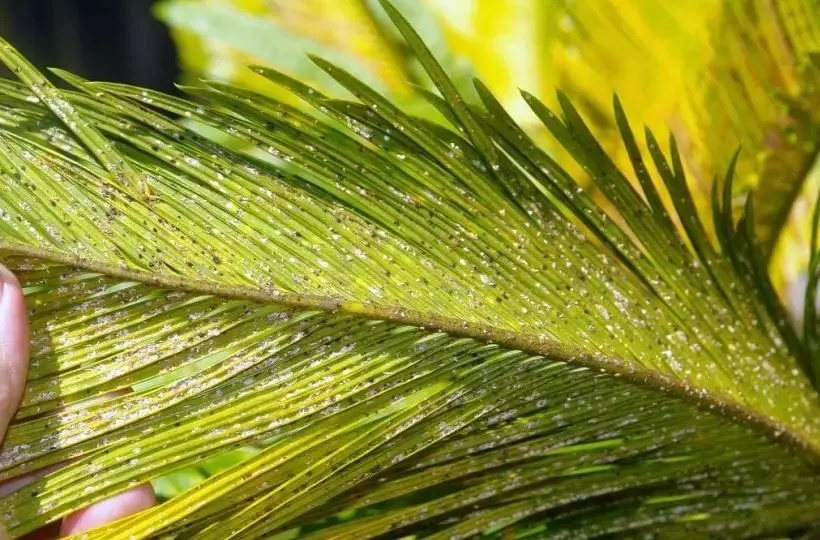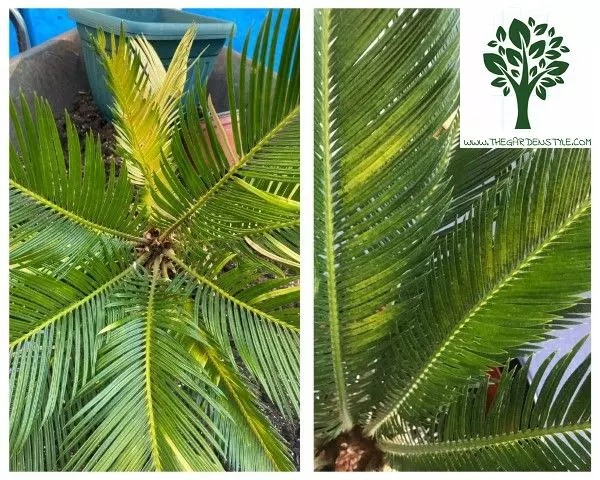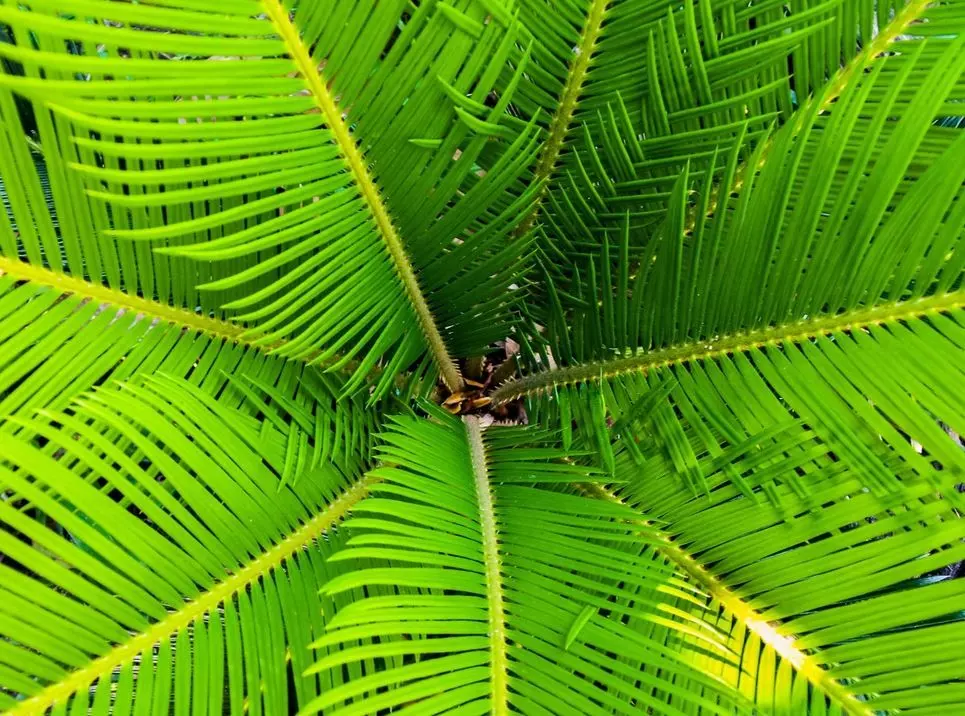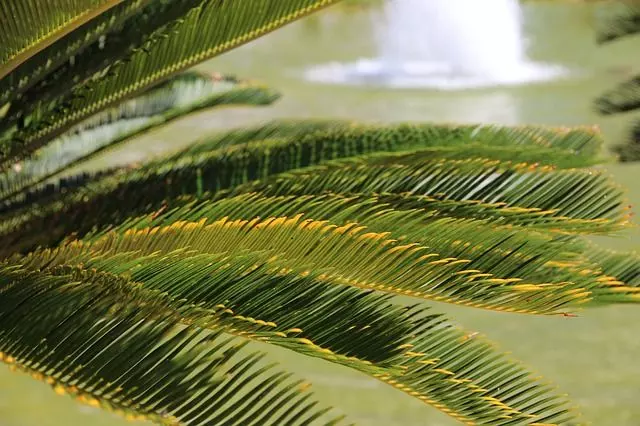A common question from gardeners is, “Why is my Sago Palm Turning Yellow?” If your Sago palm is yellowing, there could be several reasons behind this issue. This article summarizes the causes behind a Sago Palm Turning Yellow and, most importantly, how to fix it.
When we grow Sago Palm, there is often a problem or two, and that is when we wonder what is wrong with it. If you notice that your Sago palm is turning yellow, it could indicate various underlying issues.
If your Sago Palm is Turning Yellow, in this article, you will find out what is wrong and how you can solve it.
Sago Palm has been a plant on Earth for millions of years, specifically about 300 million years. Despite its slow growth, or perhaps because of it, Sago Palm has adapted better than other plants to hot and cold climates. But like all life, it is also not free from dangers and threats.
Sago palms are an ornamental tree native to the tropical regions of South America and Asia. They can grow up to 50 feet (15 m) tall and have a trunk diameter of about 2 feet (60 cm). The leaves are large, green, and fan-shaped.
The Sago palm is one of the few plants that can tolerate temperatures as low as 40 °F (4 °C) and grow in a wide range of soil types. It also requires little water once established. These plants are not recommended for planting in the far north or south because they will not survive freezing temperatures.
Table of Contents
Why is My Sago Palm Turning Yellow?
Why is My Sago Palm Turning Yellow? If you suddenly notice that your sago palm is turning yellow, this may be due to many species of mealybugs, the most common being the cotton bug, which is the one that, in turn, most affects ornamental plants. They appear on the underside of the leaves, and when you touch them, you notice that they have a very soft touch. Their body is very fragile, so I recommend wearing gloves so you don’t end up with stained hands.
They favor warm and dry weather, so that you will see them mostly in summer. But they can be easily treated with natural insecticides such as Neem Oil or kerosene oil or chemical insecticides such as Dimethoate 40%.
Important: It can also have mealybugs in the roots. Water from time to time with water to which you will have added the indicated dose of insecticide to prevent or combat them.

Let’s continue with this overview of the potential causes behind a yellowing sago palm and, more importantly, offers solutions to address the issue.
Let’s return to the question, Why is my Sago Palm Turning Yellow? There are several reasons behind the causes of yellowing Sago palms.
Overwatering, inadequate drainage, nutrient deficiencies, or exposure to extreme temperatures can cause yellowing leaves in sago palms. Examining the soil for nutrient deficiencies and providing appropriate fertilization for Sago palm can help address the yellowing leaves and solve the problem. Let’s see.
Sago Palm Leaves Turning Yellow
This happens when we buy a plant in a greenhouse protected from direct sun and put it directly in a very exposed area. The leaves in the center quickly turn yellow, and the whole plant can turn yellow in a few days. This is one of the main causes of Sago Palm Leaves turning yellow.

Sago palm leaves turning yellow. What to do? In this case, it is necessary to protect it from direct light with a shade net or, if we have it in a pot, to change its place and to accustom it little by little to the sun, beginning in winter when the rays are less direct. Every day we will expose it more and more to the sun so that it has time to get used to it.
Sago Palm Yellow Spots
Sago Palm yellow spots appear, especially after the first cold winter outdoors. Although it can withstand frosts down to 25 °F (-4 °C), it has to adapt little by little, gradually. It is unnecessary to do anything since it will put out new green leaves that year or the following year.
However, sago palm turning yellow could also be due to a lack of potassium, so it is recommended to fertilize sago palm with potassium-rich fertilizers between spring and summer (Order it here). Learn more about Sago palm fertilizer.
Potassium and nitrogen deficiency will cause chlorosis in the sago palm. We recommend fertilizing to avoid yellow leaves on the sago palm. We recommend our article about Nutrient Deficiency in Plants.
- Contains magnesium, iron and manganese to grow lush palms, cyads and tropical plants
- Prevents yellowing and curling of fronds
- Feeds up to 3 months

Sago Palm Yellow Tips
If it is only the tips, it is usually due to a lack of ventilation. Sago Palm yellow tips are a common problem when we place them inside the home. To avoid it, it is important to keep it, whenever possible, outdoors or in a ventilated room.
We must also remember that if we place the sago palm in a very cold area, the sago palm turns yellow. Remember, the sago palm is a tropical plant and does not resist much cold.
Sago Palm Leaves Turning Yellow (Lower Leaves)
If your Sago Palm has yellow lower leaves, it can be mainly for two reasons: overwatering or underwatering. The plant should be watered about twice a week in summer and every 4-5 days the rest of the year. When watering, the soil must be soaked well to reach the roots. Otherwise, the leaves will start to turn yellow.
In case we do not know if it needs water or not, we can check the humidity by digging a little in the soil if we have it in the garden or introducing a thin wooden stick to the bottom of the pot to see if it comes out with a lot of substrates adhered which would mean that it is wet. Therefore it is not necessary to water.
What to do if we have over-watered? The idea is to cut off the yellow leaves and not to water until the soil or substrate has dried out completely. To help it further, we can water it with powdered rooting hormones. This way, it will emit new roots.

Conclusions Regarding a Sago Palm with Yellow Leaves
Let’s return to the question, Why is my Sago Palm Turning Yellow? There are several reasons behind the causes of yellowing Sago palms.
To summarize, we can say that the sago palm is turning yellow for several reasons, and are the following:
- Sago palm turns yellow due to attack by insects such as mealybugs or cotton bugs.
- Exposing a sago palm to direct sunlight will cause the sago palm to turn yellow. It is best to expose it to the sun gradually.
- Sago palm also turns yellow due to freezing, which causes its leaves to burn and turn yellow. Remember, it is a tropical plant.
- If we have our sago palm in a place with little ventilation, we will also have problems with yellow leaves due to the lack of good ventilation in the environment.
- Too much or too little water in the sago palm will also cause the sago palm to have yellow leaves.
As you can see, all these problems that cause sago palm yellowing leaves have a solution and are not difficult to identify.
We hope you can fix the problem of yellow leaves on your sago palm tree, and if you have any questions about what may be happening to your sago palm tree, do not hesitate to contact us through the contact form.



Our Sago may be dying because we’ve had it for almost 30 years. We live in Las Vegas, NV. We re-potted it about a year ago and moved it out of the sun because it was yellowing.
It’s in a shadier spot but is still going downhill.
The bottom of the leaves look normal but we haven’t fertilized it in years.
We are watering it frequently because of the extreme heat.
Can it be saved?
Thank you for taking the time to read this.
Esther Schmidt
Hello Esther,
What material is the pot made of? One concern is that if the pot is made of a thin material, it could be transferring heat to the roots. If that’s the case, you could place the pot inside a larger planter to insulate it from the heat. Also, consider covering the soil with bark mulch to prevent overheating and to conserve moisture.
Regarding fertilization, it’s best to wait until the extreme temperatures subside, as fertilizing in very hot weather is not recommended.
I hope these suggestions help your Sago palm recover!
Best regards,